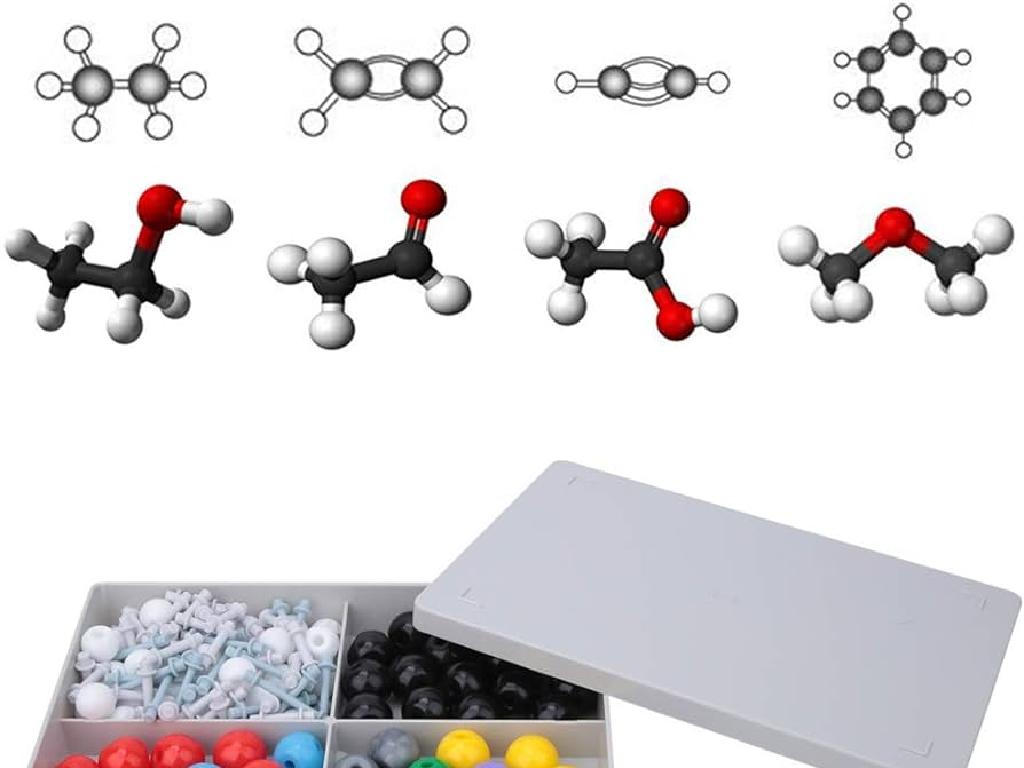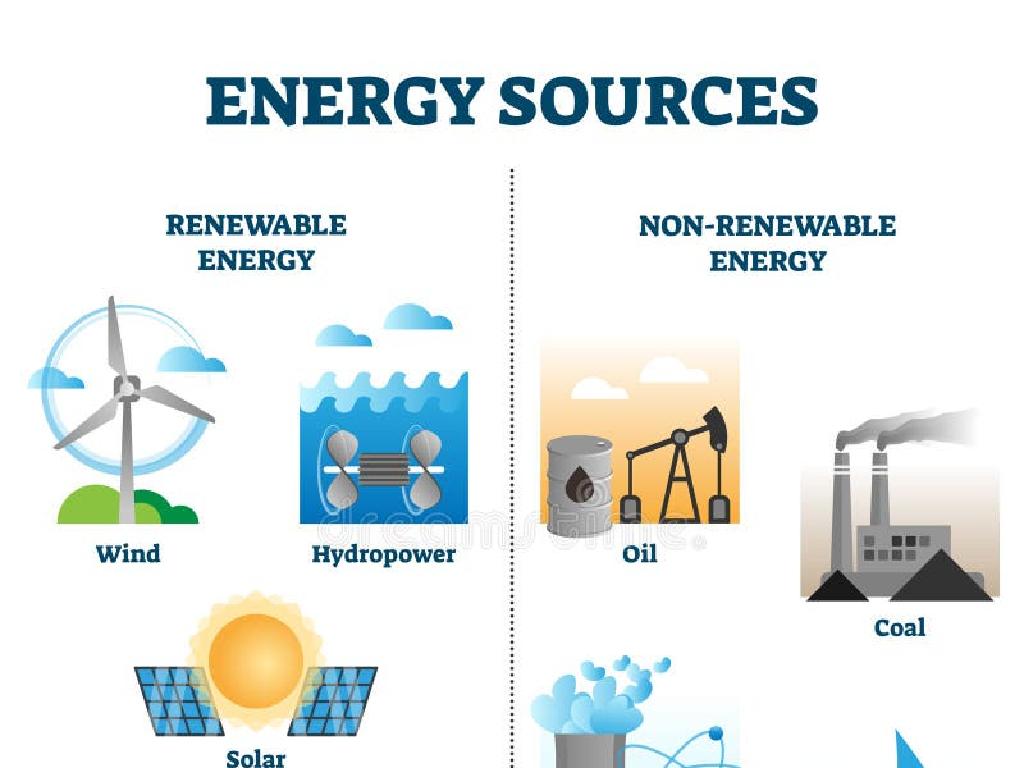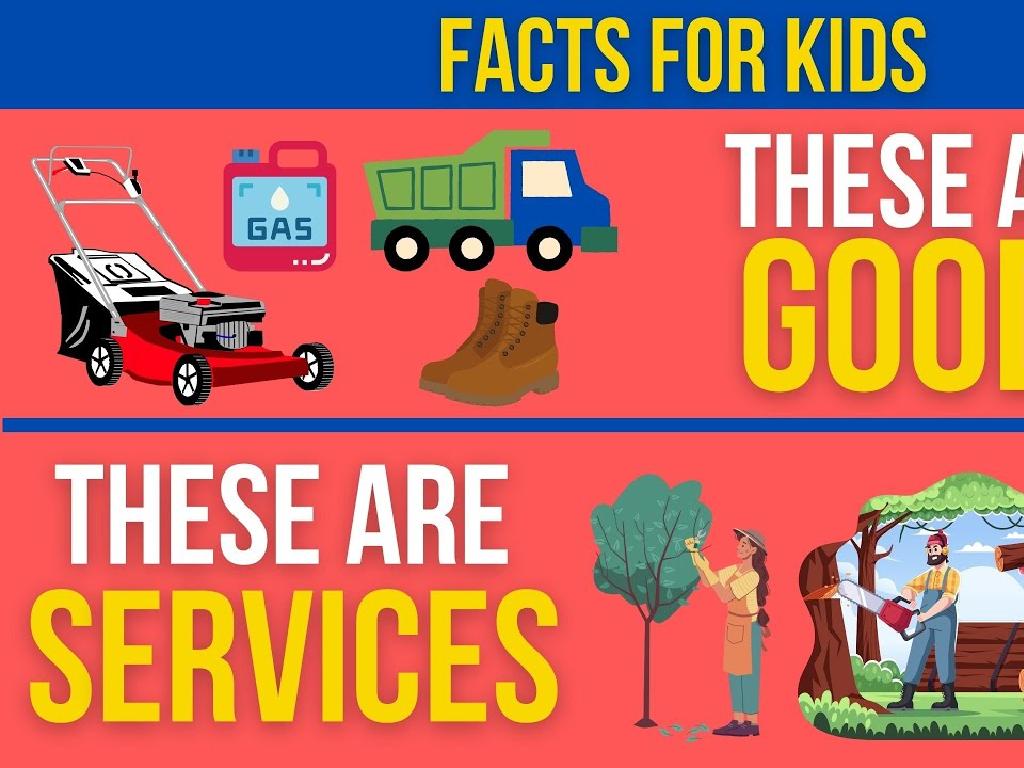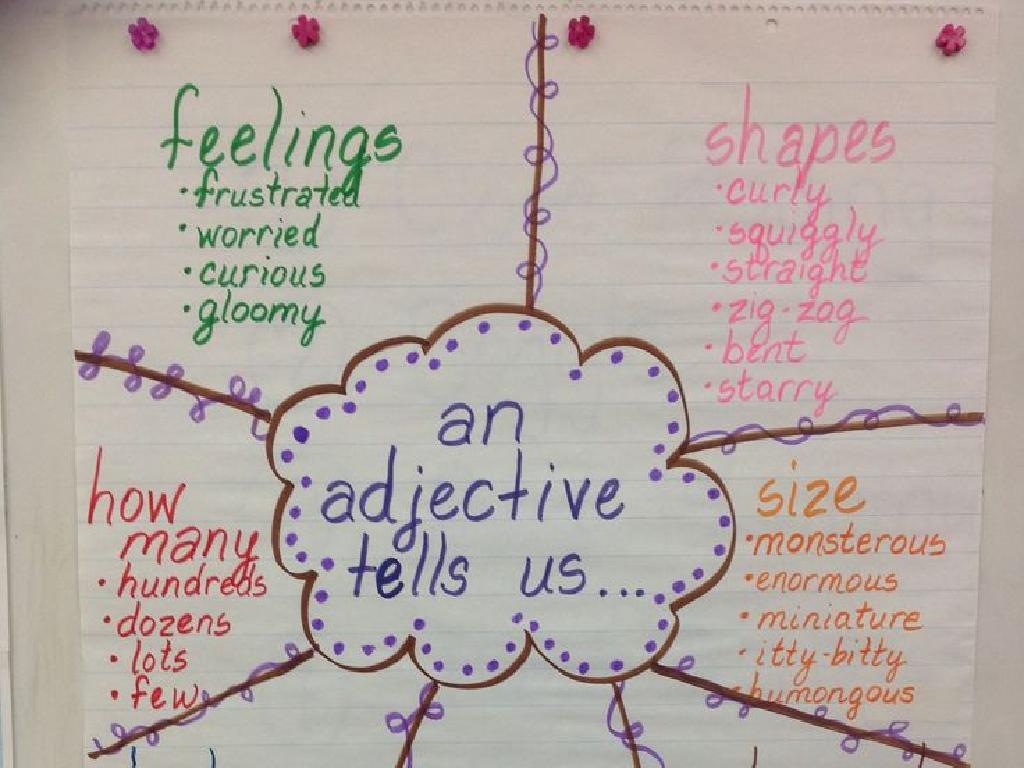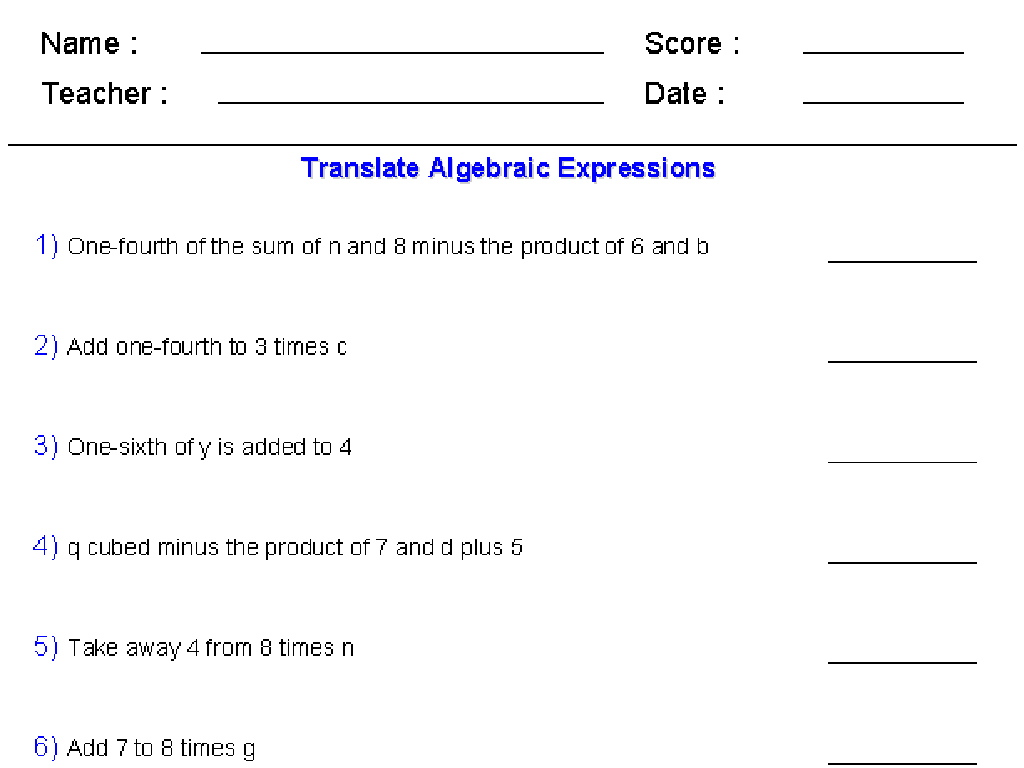Identify Common And Proper Nouns
Subject: Language arts
Grade: Third grade
Topic: Nouns
Please LOG IN to download the presentation. Access is available to registered users only.
View More Content
Welcome to Nouns!
– What are nouns?
– Nouns are words for people, places, things, or ideas.
– Types of nouns: Common & Proper
– Common nouns are general names like ‘city’, ‘dog’.
– Common nouns: general names
– Proper nouns are specific names like ‘Paris’, ‘Fido’.
– Proper nouns: specific names
|
Begin the lesson by defining nouns to the students, ensuring they understand that nouns can be anything from a person to an abstract idea. Then, introduce the concept of common and proper nouns, explaining that common nouns are general names for a class of objects (like ‘school’ or ‘car’), while proper nouns are specific names that always start with a capital letter (like ‘London’ or ‘Toyota’). Use familiar examples to help them relate to the topic. Encourage students to look around the classroom or think about their favorite places and pets to come up with examples of both common and proper nouns.
Understanding Common Nouns
– Common nouns name general items
– Words for people, places, or things like ‘city’, ‘dog’, ‘teacher’
– They’re lowercase unless starting a sentence
– We don’t capitalize ‘dog’ in ‘I have a dog’ but do in ‘Dog is my pet.’
– Examples: ‘city’, ‘dog’, ‘teacher’
– ‘city’ refers to any city, ‘dog’ any dog, ‘teacher’ any teacher
|
This slide introduces the concept of common nouns to the students. Common nouns are words that refer to general items, not specific ones, and they are not capitalized unless they appear at the beginning of a sentence. Use everyday objects in the classroom to give examples of common nouns, and encourage students to come up with their own examples. Emphasize the difference between common and proper nouns, which will be discussed later, and ensure students understand that common nouns are the general names for things around us.
Understanding Proper Nouns
– Proper nouns name specific things
– Like ‘Sarah’ for a friend, or ‘Africa’ for a continent
– They begin with a capital letter
– Examples: ‘Sarah’, ‘New York’
– ‘Mount Everest’ not just any mountain
– Common vs. Proper nouns
– ‘Dog’ is common, but ‘Lassie’ is proper
|
This slide introduces the concept of proper nouns to third-grade students. Proper nouns are the specific names given to unique entities such as people, places, or things, and they are always capitalized. Use examples that are relatable to the students, like their own names, the name of their school, or a famous landmark they might know. Contrast proper nouns with common nouns to highlight the difference; for instance, ‘girl’ is a common noun, but ‘Sarah’ is a proper noun because it refers to a specific girl. Encourage students to look around their environment or think about their favorite books and movies to find examples of proper nouns.
Common vs. Proper Nouns
– Comparing common & proper nouns
– Common: ‘country’, Proper: ‘India’
– ‘country’ is a general name, ‘India’ is specific
– Common: ‘month’, Proper: ‘October’
– ‘month’ is general, ‘October’ is a specific month
– Think of your own examples!
|
This slide is aimed at helping third-grade students distinguish between common and proper nouns. Start by explaining that a common noun is a general name for a person, place, or thing, like ‘country’ or ‘month’. In contrast, a proper noun is a specific name for a particular person, place, or thing, such as ‘India’ or ‘October’. Encourage the students to come up with their own examples by thinking of a general category (common noun) and then a specific name within that category (proper noun). This activity will help solidify their understanding of the difference between common and proper nouns. Make sure to provide guidance and feedback as they share their examples in class.
Identifying Common and Proper Nouns
– Practice identifying nouns
– Clues: Capitalization & context
– Capitals for proper nouns, not common
– Board examples together
– We’ll look at sentences and find nouns
– Understand common vs. proper nouns
– Common nouns are general, proper nouns are specific
|
This slide is aimed at helping third-grade students distinguish between common and proper nouns. Start by explaining that a noun is a person, place, thing, or idea. Emphasize that proper nouns name specific people, places, or things and always begin with a capital letter, while common nouns are general names and do not. Use the board to write sentences and work through examples with the class, asking students to identify the nouns and decide if they are common or proper. Encourage participation and provide immediate feedback. For homework, students could find examples of common and proper nouns in their favorite books or around their home.
Activity Time: Spot the Nouns!
– Identify common and proper nouns
– Receive a worksheet with sentences
– Circle common nouns in red
Common nouns are general names like ‘dog’, ‘school’, ‘city’.
– Circle proper nouns in blue
Proper nouns are specific names like ‘Fido’, ‘Lincoln Elementary’, ‘New York’.
|
This activity is designed to help students practice distinguishing between common and proper nouns. Hand out the worksheets with sentences that contain a mix of common and proper nouns. Explain that common nouns are general names for people, places, things, or ideas, while proper nouns are specific names and should be capitalized. Instruct the students to use a red pen or pencil to circle common nouns and a blue one for proper nouns. This visual distinction will reinforce the concept. After the activity, review the answers as a class to ensure understanding. Possible sentences for the worksheet: ‘Sarah went to the park.’ ‘The Golden Gate Bridge is in San Francisco.’ ‘He adopted a cat named Whiskers.’
Review and Share: Common vs. Proper Nouns
– Review answers as a class
– Volunteers share on the board
– Discuss why nouns are common or proper
– Is it a general name or a specific one?
– Learn from each other’s findings
|
This slide is meant to facilitate a class discussion and review session on common and proper nouns. Encourage students to volunteer to come up to the board and share the nouns they have identified as either common or proper. As each noun is presented, engage the class in a discussion about why it is categorized as such, focusing on whether the noun represents a general item or a specific one. This interactive session will help reinforce the lesson and allow students to learn from each other. Prepare to provide guidance and clarification as needed, and ensure that every student feels comfortable participating in the discussion.
Game Time: Noun Hunt!
– Let’s play a noun finding game
– Find common and proper nouns
– Common nouns are general names, like ‘dog’ or ‘school’.
– Write down your noun examples
– Proper nouns are specific, like ‘Buddy’ or ‘Lincoln Elementary’.
– Recall: Proper nouns are capitalized
|
This interactive game is designed to help students apply their knowledge of common and proper nouns in a fun and engaging way. Have the students search the classroom for objects, which they will then categorize as common or proper nouns. Remind them that common nouns are general names for things, while proper nouns are specific names and always start with a capital letter. Encourage them to write down their findings. After the hunt, facilitate a discussion where students share their examples and explain why they categorized them as they did. This will reinforce their understanding and help them remember the difference between common and proper nouns.
Noun Masters: Common and Proper Nouns
– Congratulations on learning nouns!
– Capitalize proper nouns always
– Names like ‘Sarah’ or places like ‘Paris’ start with a big letter
– Practice makes perfect
– Try finding nouns in books or while you play
– You’re on your way to mastery!
|
This slide is a conclusion to reinforce the lesson on common and proper nouns. Celebrate the students’ effort in learning the difference between common and proper nouns. Emphasize the importance of capitalizing proper nouns, which include names of people, specific places, and unique things. Encourage consistent practice by identifying nouns in everyday situations, which will help solidify their understanding. As they become more familiar with these concepts, they will develop into noun experts. Provide examples and suggest fun activities for practice, such as noun scavenger hunts or storytelling with a focus on nouns.

